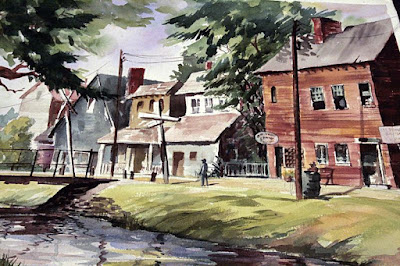Going to Meet the Man
Who has the right to tell whose story? In “Slavery’s Pleasant Homes,” Lydia Maria Child creates black characters and develops her short story based on their experiences, despite being a white woman; in Baldwin’s “Going to Meet the Man” he creates white characters and develops his story based on their experiences. Is this artistic decision justified? If so, what is the point?
Baldwin represents the sexuality of white men as being defined in contrast to the oversexualization of black men. In what ways is Jesse’s masculinity based on his dominance over African American men? What are some moments that highlight this?`
What is the purpose of the flashback to the lynching?



Response from Huneeya Siddiqui:
ResponderExcluirBaldwin's short story, "Going to Meet the Man" illuminates many dominant racist stereotypes from the 60s, the time period in which the story was both set and written. One of the ways in which Baldwin is able to so clearly engage these stereotypes and spell out their implications is by writing from the point of view of a white person, in whose mind these stereotypes are dominant perceptions and form his version of the truth. One of the stereotypes he explores is that of the black man as overly sexual, to the point of being beastly and animalistic. This is most clear in his description of the castration of the black man, where his genitals are described as "huge, huge, much bigger than his father's, flaccid, hairless, the largest thing he had ever seen till then, and the blackest" (248). The sexuality of the black man is made doubly salient; first in the white man's need to remove his genitalia prior to him being burned alive and then again in the child's description of them. From their removal it is clear that the sexuality of a black man is seen to pose a danger to society, with the child's description acting as a justification of this idea.
However, masculinity was still at least partially defined by the sexual capacity of men. Baldwin introduces us to this idea from the very beginning of the story, where Jesse feels emasculated after being unable to have sex with his wife. Thus, Baldwin explores how the oversexualization of the black man had to be juxtaposed with a "civilized" white masculine version of sexuality, making it clear that white men still had the dominant position in society. This is then explained by way of the concept of a sexual conquest. The story closes with Jesse having sex with his wife. Thus, in the end, despite the sexuality of the black man, it is the white man who is able to have the dainty white woman as his prize, is able to have sex with her. Through this narrative, Baldwin highlights the fine line white men walked in painting black men as sexual beasts while also retaining a sense of masculine dominance.
Masculinity is oftentimes rooted in sexual desires and actions, and this story is no exception. The sexual tension between Jesse and African American women is very clear in Baldwin’s “Going to Meet the Man." At the beginning of the story, Jesse comments that his wife isn’t exciting enough for him, and that he had made a habit of having sex with African American women. A concrete example of this can be found during Jesse's interaction with the young boy. When the boy refuses his gum, and says “ 'I don’t want nothing you got, white man.’ “ (235) Jesse becomes very angry. He seems to retaliate against the boy by asserting his sexual dominance over African American women: “‘You lucky we pump some white blood into you every once in a while — your women! Here’s what I got for all the black bitches in the world — !’ …to his bewilderment, his horror, beneath his own fingers, he felt himself violently stiffen…” (235). In this moment, when he begins to speak of having sexual relations with African American women, he becomes sexually aroused. At this point in the story, it seems that his violent hatred of slaves stems, at least in part, from confusion about his sexual attraction to them (and his lacking attraction to his white wife).
ResponderExcluirThe origin of this tension between masculinity/sexuality and dominance over African American men becomes more clear from the scene of the lynching that Jesse recalls partway through the story. On page 247 and 248, Baldwin describes a lynching scene from Jesse’s childhood, during which an African American man’s genitals are violently removed. Baldwin describes the intense eye contact between young Jesse and the African American man right before his penis is cut off. Baldwin's inclusion of this moment seems to suggest that this experience caused Jesse’s domineering nature as an adult, and brings up many questions to consider. Did young Jesse feel emasculated by his eye contact with the African American man? Did this moment cause him to become insecure in his own masculinity? Is his simultaneous sexual attraction to, and hatred towards black women an attempt to reestablish his masculinity?